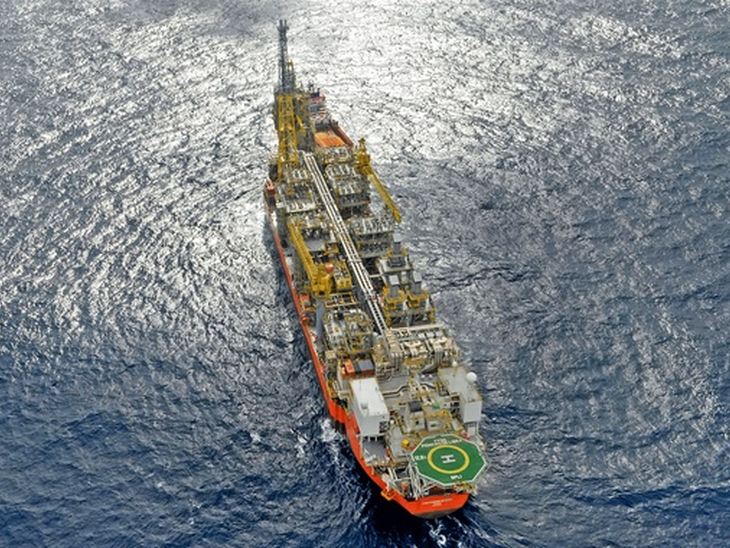
T&B Petroleum/Press Office ANP

The ANP's Monthly Bulletin on Oil and Natural Gas Production presents detailed data for February 2020. This month, 3,783 MMboe / d (million barrels of oil equivalent per day) were produced, of which 2,972 MMbbl / d (million barrels) per day) of oil and 129 MMm3 / d (million m3 per day) of natural gas. The Bulletin is available at http://www.anp.gov.br/publicacoes/boletins-anp/2395-boletim-mensal-da-producao-de-petroleo-e-gas-natural.
Oil production decreased 6.2% compared to the previous month and increased 19.4% compared to February 2019. Natural gas decreased 7.1% compared to January and increased 17.1% in comparison with the same month of the previous year.
The drop in oil and natural gas production compared to the previous month was caused mainly by the occurrence of scheduled shutdowns and others necessary to mitigate operational safety risks in some facilities. However, it should be noted that the volumes produced in February 2020 were higher than those provided for in the Annual Production Plan (PAP) since year, whose volumes were 2,762 MMbbl / d of oil and 119,291 MMm3 / d of natural gas. This increase in production in relation to the forecast occurred mainly due to the reduction in the duration of the scheduled stoppage of the FPSO Cidade de Maricá, in the Lula field, and by the postponement of the scheduled stoppage of another unit.
Pre-salt
Pre-salt production in February came from 118 wells and corresponded to 66% of national production, totaling 2,497 MMboe / d, of which 1,993 MMbbl / d of oil and 80,129 MMm3 / d of natural gas. Compared to the previous month, total production decreased by 6.9% and, compared to February 2019, it increased by 36.8%.
Use of natural gas
In February, the use of natural gas was 97.2%. 61.4 MMm³ / day were made available to the market. Gas flaring in the month was 3,644 MMm³ / d, a reduction of 9.7% compared to the previous month and 28.7% compared to the same month in 2019.
Origin of production
Offshore fields produced 96.7% of oil and 82.8% of natural gas. The fields operated by Petrobras produced 93.3% of oil and natural gas. With respect to fields operated by Petrobras and with exclusive participation by the company, they produced 39.5% of the total.
Highlights
The Lula field, in the Santos Basin, was the largest producer of oil and natural gas, registering 974 Mbbl / d of oil and 41.3 MMm3 / d of natural gas.
The FPSO Cidade de Mangaratiba platform, producing in the Lula field through eight interconnected wells, produced 147.577 Mbbl / d of oil and 7.917 MMm³ / d of natural gas, being the facility with the highest production of both.
Estreito, in the Potiguar Basin, had the largest number of onshore producing wells: 1,081.
Marlim Sul, in the Campos Basin, was the maritime field with the largest number of producing wells: 71.
Marginal accumulation fields
These fields produced 64.6 bbl / d of oil and 14.4 Mm³ / d of natural gas. The Iraí field, operated by Petroborn, was the largest producer, with 87.4 boe / d.
Other information
In February 2020, 295 areas granted, two areas for consideration and five for sharing, operated by 34 companies, were responsible for national production. Of these, 76 are offshore and 226 onshore, nine of which are for area contracts containing marginal accumulations. Production took place in 7,141 wells, of which 645 were seafarers and 6,496 onshore.
The average API grade was 27.7, with 3.4% of production considered light oil (> = 31 ° API), 83.2% average oil (> = 22 API and <31 API) and 13.4% oil heavy (<22 API).
The mature onshore basins (fields / long-term tests in the Espírito Santo, Potiguar, Recôncavo, Sergipe and Alagoas basins) produced 103 Mboe / d, of which 81.7 thousand bbl / d of oil and 3.4 MMm³ / d of gas Natural. Of this total, 90,600 boe / d were produced by Petrobras and 12,400 boe / d were produced by concessions not operated by Petrobras, of which: 342 boe / d in Alagoas, 4,060 boe / d in Bahia, 16 boe / d in Espírito Santo, 7,741 boe / d in Rio Grande do Norte and 213 boe / d in Sergipe.

Contact us